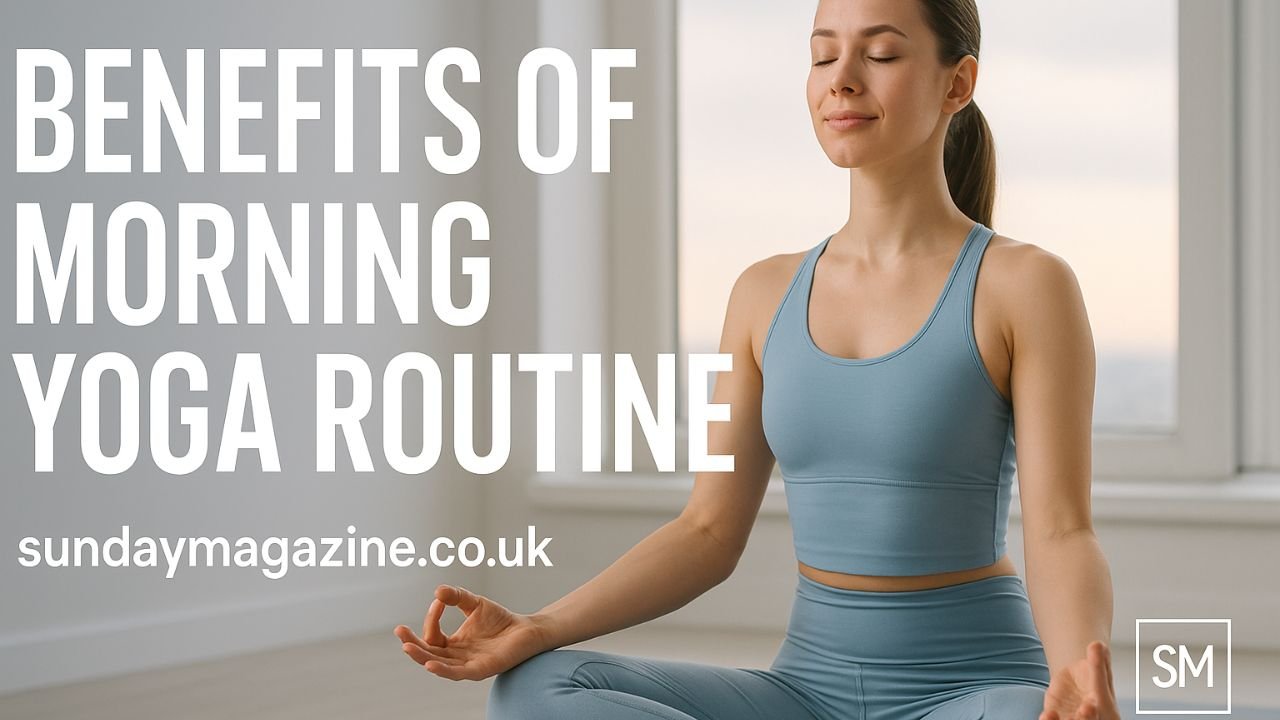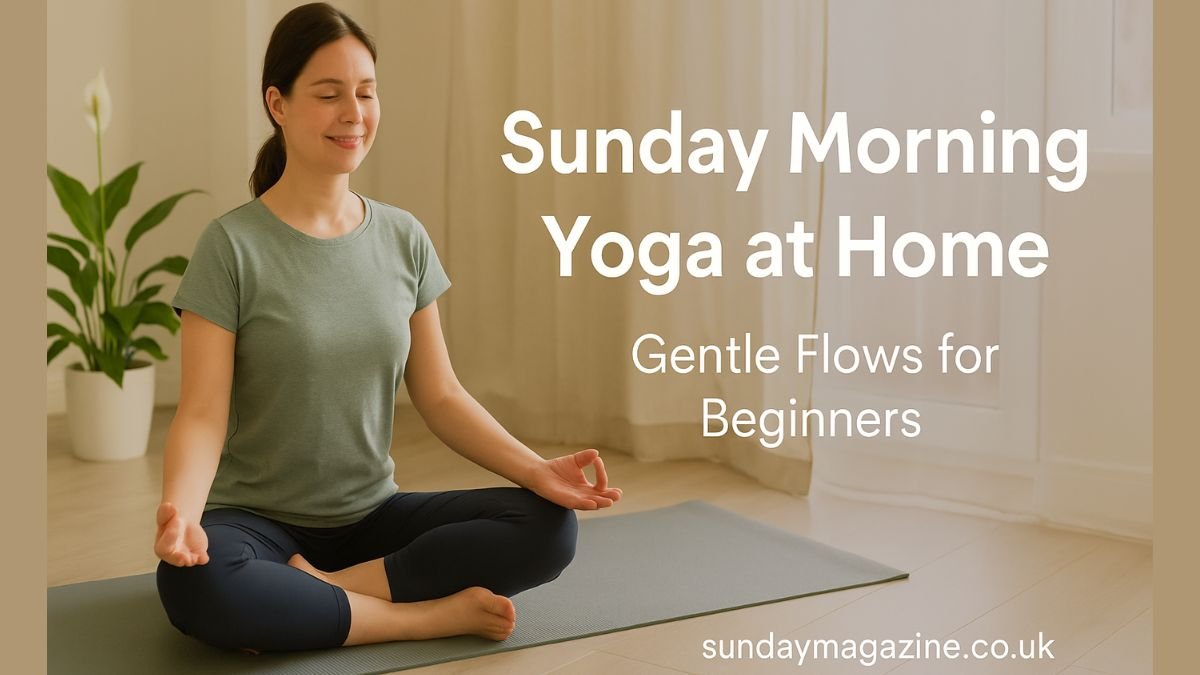In today’s fast-paced world, stress and anxiety have become almost commonplace. Many individuals struggle to find effective ways to start their day with a sense of calm and balance. A morning yoga routine offers a solution, providing not only physical benefits but also mental clarity. If you’re seeking to improve flexibility, reduce stress, or boost your energy levels, incorporating yoga into your morning routine can significantly enhance your well-being. This article will explore the top 5 benefits of a morning yoga routine and provide actionable tips to integrate yoga into your daily life.
1. Boosts Mental Clarity and Focus
One of the most noticeable benefits of a morning yoga routine is the immediate improvement in mental clarity. The quiet, reflective nature of yoga helps clear the mind, setting a positive tone for the day. Here’s how it works:
-
Mindfulness and Meditation: Yoga practices often include elements of mindfulness and meditation, both of which encourage a focused mindset. Morning yoga offers the perfect time to set aside the distractions of the world and focus inward, allowing you to prepare for a productive day ahead.
-
Breathing Techniques: The controlled breathing techniques (Pranayama) practiced during yoga have been shown to activate the parasympathetic nervous system, reducing stress and promoting a calm and focused mental state.
-
Enhanced Cognitive Function: Studies have demonstrated that yoga can improve brain function, particularly in areas related to memory and concentration. By stimulating blood flow to the brain and promoting neuroplasticity, yoga can help sharpen focus for your daily tasks.
How to Make the Most of Morning Yoga for Mental Clarity:
-
Incorporate Breathing Exercises: Start your practice with deep, slow breathing exercises. For example, try Ujjayi breathing or alternate nostril breathing to calm the nervous system.
-
Focus on Present Moment: Practice mindfulness throughout your yoga session. Concentrate on how your body feels and let go of any racing thoughts. This practice can help bring your attention back to the present moment, improving clarity and focus throughout the day.
2. Increases Flexibility and Reduces Muscle Tension
Another important benefit of morning yoga is its ability to improve flexibility and alleviate muscle tension. Whether you’ve had a restless night’s sleep or a stressful day at work, yoga can help loosen tight muscles and increase overall flexibility. This physical benefit comes with several advantages:
-
Gentle Stretching: Yoga gently stretches muscles and increases blood flow, which helps improve flexibility over time. For beginners, yoga can provide a safe way to ease into stretching without causing injury.
-
Pain Relief: If you experience chronic pain or stiffness, morning yoga can serve as an effective remedy. Poses like Downward Dog, Cobra, and Child’s Pose help lengthen and release tension in the spine and other tight areas of the body.
-
Better Posture: Yoga helps strengthen the muscles around your spine, leading to improved posture throughout the day. Many yoga poses are designed to open up the chest and elongate the spine, counteracting the effects of slouching.
How to Use Yoga to Enhance Flexibility and Relieve Tension:
-
Incorporate Poses for Stretching: Start with simple poses like Forward Fold, Seated Stretch, or Cat-Cow to loosen up tight muscles.
-
Focus on Areas of Tension: Pay attention to areas where you tend to hold tension, such as your lower back, shoulders, or hips, and incorporate poses that target these areas.
3. Reduces Stress and Anxiety
Starting your day with yoga can significantly lower levels of stress and anxiety. The combination of mindful movement, breathing, and meditation can act as a powerful tool for emotional balance. Here’s how:
-
Lower Cortisol Levels: Studies show that regular yoga practice reduces cortisol levels, the body’s primary stress hormone. Morning yoga can help reset your system, keeping stress at bay throughout the day.
-
Promotes Relaxation: Yoga encourages deep breathing, which activates the parasympathetic nervous system, the part of the body responsible for the “rest and digest” response. This helps to lower heart rate, blood pressure, and stress levels.
-
Emotional Regulation: Practicing yoga regularly helps develop emotional resilience. By increasing self-awareness and mindfulness, yoga fosters a positive relationship with your emotions, making it easier to manage stress or anxiety.
How to Use Yoga to Combat Stress and Anxiety:
-
Focus on Breathing: Integrate deep breathing techniques like 4-7-8 or box breathing into your morning practice to reduce anxiety.
-
Try Restorative Poses: Incorporate restorative poses like Supta Baddha Konasana (Reclining Bound Angle) and Viparita Karani (Legs Up the Wall) to promote deep relaxation.
4. Enhances Physical Health and Fitness
Morning yoga can also help you achieve better physical health. Whether you’re looking to lose weight, build strength, or improve overall fitness, a consistent yoga routine can complement your goals. Here’s how it contributes to physical health:
-
Builds Strength: Many yoga poses, like Plank, Warrior II, and Chair Pose, are designed to build strength in the arms, legs, and core. Over time, these poses can improve muscle tone and overall physical strength.
-
Improves Circulation: The combination of stretching and holding poses helps stimulate blood flow throughout the body, improving circulation. Enhanced circulation supports overall cardiovascular health.
-
Promotes Joint Health: Yoga encourages fluid movement and stretches that keep joints lubricated and flexible. This can be particularly helpful for individuals with arthritis or joint stiffness.
How to Use Yoga to Improve Physical Fitness:
-
Incorporate Strength-Building Poses: Include poses like Chaturanga, Boat Pose, and Downward Dog to build strength in your arms, core, and legs.
-
Maintain Consistency: A consistent yoga practice will provide cumulative benefits for your physical health, so aim for regular sessions each morning.
5. Enhances Mood and Emotional Well-Being
Finally, a morning yoga routine can greatly improve your overall mood and emotional well-being. Starting your day with a calming practice helps set a positive tone, leading to better emotional balance and a brighter outlook. Here’s why:
-
Endorphin Release: Like any physical activity, yoga stimulates the release of endorphins, the “feel-good” hormones that improve mood and reduce feelings of anxiety or depression.
-
Increases Self-Awareness: Yoga encourages introspection, allowing you to connect more deeply with yourself. This self-awareness fosters a sense of self-compassion and emotional well-being.
-
Promotes Positive Energy: The grounding and centering aspects of yoga create a sense of inner peace, making it easier to maintain a positive mindset throughout the day.
How to Use Yoga to Boost Your Mood:
-
Integrate Positive Intentions: Set an intention (Sankalpa) at the beginning of your practice. It could be a goal like “I will remain calm today” or “I will approach the day with gratitude.”
-
End with a Relaxation: Close your practice with Savasana (Corpse Pose), allowing your body and mind to fully relax and absorb the benefits of your session.
Conclusion: Embrace a Morning Yoga Routine for a Healthier, Happier Life
The benefits of a morning yoga routine are vast and far-reaching. From boosting mental clarity and reducing stress to improving flexibility and promoting emotional well-being, yoga is an effective way to start your day on a positive note. Incorporating even just 10-20 minutes of yoga into your morning routine can make a significant difference in your overall health, fitness, and mental state.
By committing to a morning yoga practice, you’re investing in your long-term health and happiness. Whether you’re new to yoga or an experienced practitioner, the key is consistency. The more you practice, the more you’ll begin to experience the incredible benefits that yoga has to offer.
FAQs About the Benefits of a Morning Yoga Routine
1. What are the benefits of starting my day with yoga?
Starting your day with yoga offers numerous benefits, including improved mental clarity, reduced stress and anxiety, increased flexibility, and better physical health. It helps set a positive tone for the day, making you feel more focused and energized.
2. How does morning yoga improve mental clarity?
Morning yoga boosts mental clarity through mindfulness and breathing exercises. These practices help calm the mind, reduce stress, and enhance cognitive functions like focus and concentration, ensuring you’re mentally prepared for the day ahead.
3. Can yoga help with flexibility and muscle tension?
Yes, yoga helps improve flexibility by gently stretching muscles and promoting blood flow. It also alleviates muscle tension, reducing stiffness and discomfort, especially in areas like the back, shoulders, and hips.
4. How does morning yoga reduce stress and anxiety?
Yoga helps reduce stress by activating the parasympathetic nervous system through deep breathing and relaxation poses. This lowers cortisol levels (the stress hormone) and encourages a calm, centered mindset for the day.
5. Will yoga help me get in better physical shape?
Yes, yoga can improve your physical fitness by building strength, increasing flexibility, and enhancing circulation. It also promotes joint health and can be a great complement to other fitness routines for overall well-being.
6. How can yoga improve my mood and emotional well-being?
Yoga enhances mood by releasing endorphins (the “feel-good” hormones) and promoting self-awareness. Regular practice fosters a sense of inner peace and emotional resilience, which can help maintain a positive mindset throughout the day.
7. How long should I practice yoga in the morning?
Even 10-20 minutes of yoga in the morning can provide significant benefits. The key is consistency. Aim to incorporate yoga into your daily routine, gradually increasing the duration as you feel more comfortable.
8. Can beginners start with a morning yoga routine?
Absolutely! Yoga is suitable for beginners, and there are plenty of simple poses to get started with. Focus on gentle stretches and breathing exercises, and gradually build up your practice as you gain more experience.





